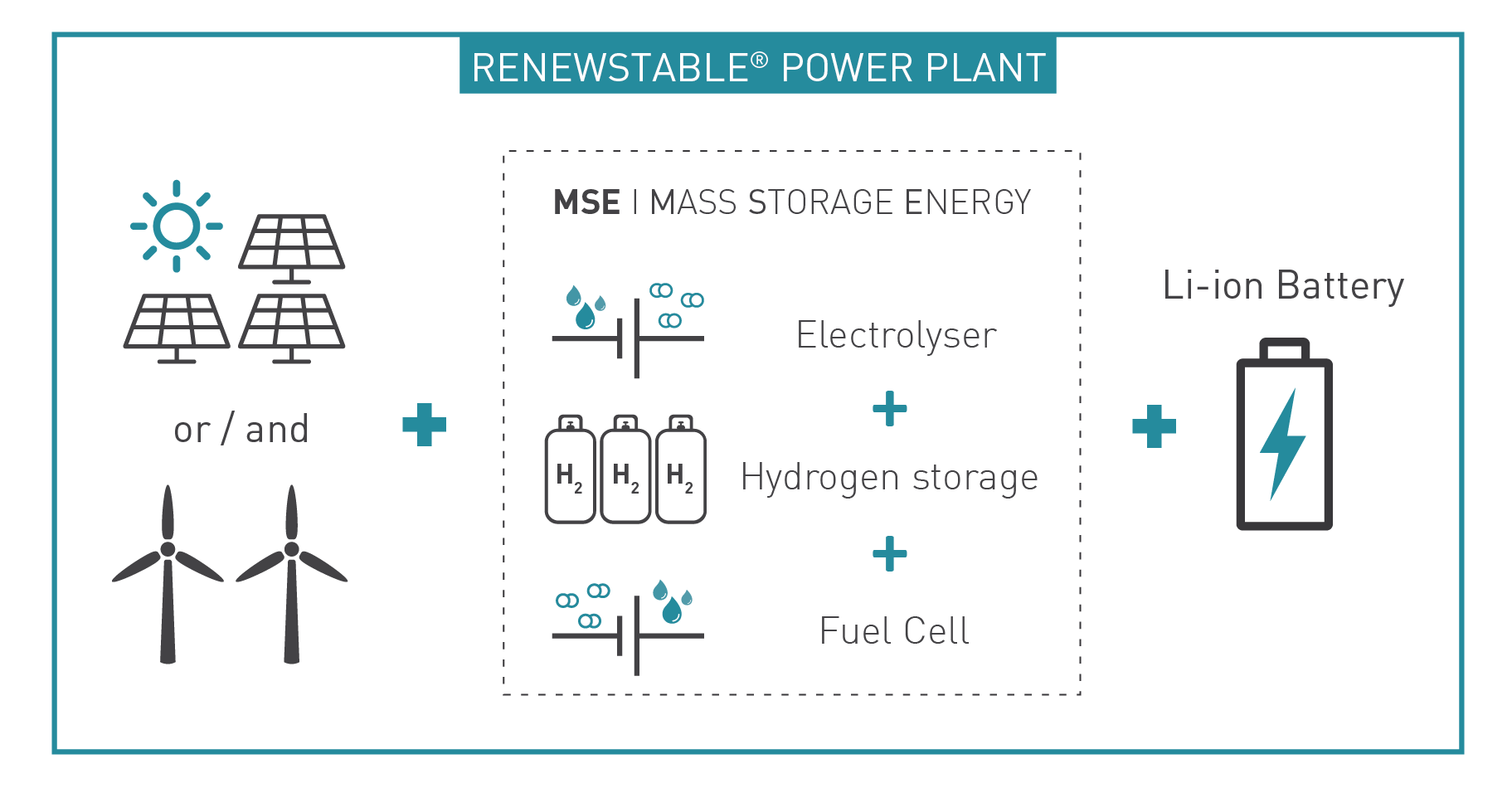Right now you can put up solar panels, attach them to a battery, and live off-grid. The problem is in winter you need a lot of panels and a big battery for cloudy days, or you “cheat” and get heat energy by burning something.
Cue the hydrogen proponents, saying e.g. “Solar+hydrogen = self-sufficient/self-sustaining.” People run their houses off propane tanks, and some off-grid survivalists don’t just burn propane for heat but also to power generators for appliances; therefore, swap the propane for hydrogen made by electrolysis, and you’re green and sustainable.
But you can’t buy this green solution. Nobody sells a home system that combines solar and hydrogen. The commercial home fuel cells that are supposedly “big in Japan” run off natural gas piped to the home to make some electricity together with heat. That’s not decarbonization! Meanwhile the company HdF-Energy (Hydrogène de France) touts its Renewstable® “Multi-MW power plants supplying firm power 24/7” using hydrogen storage, but it seems to be a big industrial system for remote industrial operations and islands that aren’t connected to the grid (that as of January 2020 doesn’t seem to actually be in production).
It seems plausible that you could shrink the Hydrogen Economy™ down to some panels on your roof and a tank of hydrogen. Why not? Because physics affects economics! Here’s HdF-Energy’s schematic:

It’s intuitively obvious the electrolyzer, compressor, tanks, and fuel cell add a lot of cost and complexity over using only a battery to store the electricity. And the inefficiency of using electricity to make hydrogen, then compressing and storing the hydrogen, then running it through a fuel cell to make electricity (or for even worse efficiency, burning it in a generator to make electricity) means you have to put up 2.5 times as many solar panels. Note the dotted line around the middle: just cut it out to massively save on capital costs!
Despite all the downsides, it turns out someone has done this, Mike Strizki with his “Hydrogen House”. I can’t find prices for his Gencore Plug Power fuel cell and Proton Energy electrolyzer, or 11 big propane tanks, but they’re probably a lot more than a Tesla PowerPack battery. Call him with a big check in hand, ignore The Man in local goverment who wants to make you get approval and permits to make and store explosive hydrogen on your property, and live the green dream! Note that even in his hydrogen house “[solar PV electricity] is collected in a relatively small battery bank used to run a low-pressure electrolyzer,” so we’re back to the question why bother turning electricity into hydrogen when you could just increase the battery size. (Similarly, hydrogen fuel cell vehicles all have a lithium-ion battery in them.) The practical benefit for a DIYer is she already has a propane stove, hot water tank, and central heating. The theoretical benefit is a propane tank is a lot cheaper than a bigger battery, so at some point a far more complicated system with cheaper storage per kWh than a big battery must surely end up cheaper. If you fill your yard with used propane tanks, maybe it does. At grid scale, some kind of enormous hydrogen storage tank or underground cavern must surely end up cheaper than shipping containers packed with batteries.
All this is more proof of spage’s law:
In a world of cheap renewable electricity, the inefficient detour into hydrogen is always at risk of getting optimized away.
